Sensor AI is designed to empower individuals, researchers, and businesses by providing accessible, high-quality AI tools and datasets. Below are detailed use cases showcasing how different stakeholders can leverage the platform to solve real-world problems.
1. AI Researchers & Data Scientists
Problem:
Training accurate AI models requires large, well-annotated datasets. However, collecting and labeling data is time-consuming and expensive, especially for niche domains.
Solution with Sensor AI:
Access Diverse Datasets: Researchers can browse and purchase pre-labeled datasets in the Sensor AI Marketplace (e.g., medical imaging, satellite data, or autonomous vehicle datasets). Accelerate Annotation: Use the AI-assisted labeling tool (with YOLOv5, PoseNet, etc.) to reduce manual effort. Crowdsource Complex Labels: For specialized tasks (e.g., 3D bounding boxes in LiDAR data), researchers can distribute annotation tasks to the decentralized workforce and pay in $SENSE tokens. Example Workflow:
A researcher working on wildlife conservation needs labeled images of endangered species from camera traps. They upload raw images to Sensor AI and use automated pre-labeling to detect animals. For fine-tuning, they hire expert annotators via the platform to verify labels. The final dataset is used to train a custom model on Sensor AI’s decentralized compute network. 2. Freelance Annotators & Gig Workers
Problem:
Many skilled annotators lack access to fair-paying projects due to middlemen taking large fees in centralized platforms.
Solution with Sensor AI:
Earn $SENSE Tokens: Annotators complete tasks (e.g., labeling faces for emotion recognition) and receive instant crypto payments. Build Reputation: High-quality work increases their annotator rating, unlocking higher-paying jobs. Flexible Work: Choose tasks matching their expertise (e.g., medical imaging, retail product tagging). Example Workflow:
A freelance annotator in a developing country signs up on Sensor AI. They complete 1000 image annotations for an autonomous vehicle company. Payments in $SENSE are deposited directly into their wallet, avoiding high fees. Over time, their high accuracy score grants them exclusive access to premium projects. 3. Startups & Small Businesses
Problem:
SMBs lack resources to build custom AI solutions due to high data and training costs.
Solution with Sensor AI:
Buy Pre-Labeled Datasets: Avoid the cost of in-house annotation (e.g., a fashion startup purchases a clothing segmentation dataset). Fine-Tune Pre-Trained Models: Use Sensor AI’s model zoo (e.g., a restaurant trains a food recognition model for its app). Outsource Annotation: Scale labeling tasks without hiring full-time staff. Example Workflow:
A farm tech startup needs a model to detect crop diseases from drone images. They purchase a plant disease dataset from the Sensor AI Marketplace. They use crowdsourced annotators to add new disease categories. The model is trained on Sensor AI’s decentralized cloud and integrated into their app. 4. Healthcare & Medical Imaging
Problem:
Hospitals and researchers need privacy-compliant, annotated medical data, but sharing sensitive images is restricted.
Solution with Sensor AI:
Local Annotation: Use the privacy-focused web tool (images stay on-device) to label X-rays, MRIs, or CT scans. Federated Learning: Train AI models on decentralized data without exposing patient records. Tokenized Incentives: Medical students can earn $SENSE by annotating datasets for research. Example Workflow:
A radiology lab annotates tumor regions in MRI scans using Sensor AI’s polygon tool. They contribute anonymized data to a research consortium and earn tokens. A cancer detection model is trained across multiple hospitals without data leaving their servers. 5. Autonomous Vehicles & Robotics
Problem:
Self-driving car companies need massive, diverse datasets (e.g., pedestrians, traffic signs) but face high labeling costs.
Solution with Sensor AI:
Global Annotation Workforce: Distribute labeling tasks across regions to capture rare edge cases (e.g., monsoon weather conditions). AI Pre-Labeling: Use YOLOv8 to auto-detect objects, reducing manual review time. 3D LiDAR Annotation: Crowdsource complex 3D bounding box tasks for AV training. Example Workflow:
An AV startup uploads 10,000 dashcam videos from European roads. Sensor AI’s automated tool detects cars and traffic lights. Human annotators refine labels for edge cases (e.g., obscured pedestrians). The startup buys additional night-time driving data from the marketplace. 6. E-Commerce & Retail
Problem:
Online retailers need product tagging and visual search AI, but manual categorization is slow.
Solution with Sensor AI:
Bulk Annotation: Label thousands of product images (e.g., "dresses," "sneakers") via crowdsourcing. Custom Object Detection: Train models to recognize new inventory items. Example Workflow:
A shoe retailer uploads 50K unlabeled product images. Annotators classify them by style, color, and brand using $SENSE rewards. The retailer trains a visual search model to recommend similar products.  Use Cases
Use Cases